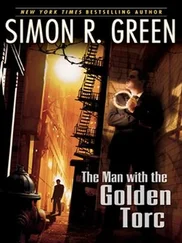In Leningrad, about twenty thousand people gathered for a memorial rally in the afternoon of the day Sakharov was buried. The organizers’ bid to hold the event in the center of the city was rejected, so the rally began in one of those vast deserted areas that crop up around Socialist cities; this one was an amorphous space in front of the Lenin Concert Hall. A succession of speakers took the podium to speak about Sakharov. Despite the freezing cold, the crowd kept growing even as the brief winter sun disappeared. At dusk, the crowd made what seemed to be a spontaneous decision to march to the center of the city. Thousands of people fell into formation, as though directed by an invisible hand, and began a long, difficult walk.
People took turns walking in front, carrying a portrait of Sakharov and a lit candle. The entire way, Marina Salye marched behind the portrait, signifying, on the one hand, her willingness to follow in the great dissident’s footsteps, and on the other to take responsibility for leading an illegal march. Less than six weeks earlier, Salye and her supporters had attended a different march, the annual November 7 celebration commemorating an anniversary of the October Revolution. Roughly thirty thousand people had joined the pro-democracy contingent during that parade. The police had tried to push the pro-democracy column away from the television cameras, but once it was level with the podium on which the first secretary of the Leningrad Regional Party Committee stood, waving to the crowd, the pro-democracy contingent stopped, and started chanting, “The People’s Front! The People’s Front!” Marchers in the official Communist contingent attempted to silence the chanters without breaking their own step. The Party secretary kept smiling and waving as though nothing out of the ordinary were going on. It was his last time up on the podium, greeting a November 7 crowd.
On November 7, the pro-democracy marchers had confronted the orderly, officially sanctioned Communist marchers; now they were simply claiming the city as their own. The march would take several hours. The crowd would overcome police efforts to break it up. They would stop to hold rallies at several symbolic locations along their route. Candles would appear in their hands. Thousands more would join them as they walked. For Salye, fifty-five and overweight, the march was grueling exercise. She had come out that day wearing a heavy fur coat that was a bit too small, so she marched with it open in front, feeling exposed and inappropriate. At one point she slipped and fell, and though she did not hurt herself, she felt ashamed. Over the many hours of the march, she kept getting news from the back of the column that the police were once again trying to break up the procession.
“The following day,” Salye recalled many years later, “we were at my house working on the People’s Front platform because we were planning a congress, when a police colonel showed up to serve me a warrant for organizing an illegal march. He was amazing, the policeman: he said, ‘You know, I could have come and not found you at home.’ He was lovely. But I said, ‘No, go right ahead.’ And I accepted the warrant and we started calling lawyers and the media. The next morning I reported to the police station…. They kept trying to get me to say who had organized the march. I kept saying, ‘How should I know? I don’t remember. There were so many people there.’” In fact, one of Salye’s People’s Front comrades had been the mastermind behind the march.
“They kept demanding an answer,” she continued. “A telegram was delivered while I was there: some well-known democratic leaders from Moscow were speaking up in my defense. Then I was told I’d be taken to court. I grabbed on to the desk with my bare hands as hard as I could and said, ‘You’ll have to carry me to court. I’m not going anywhere until my lawyer gets here.’ I spent all day there at the police station. They kept making phone calls, trying to get instructions on what to do with me. In the end they took away all my documents, took me to a room with barred windows, and locked me there. And then it was all over, and I was allowed to leave the station to the joyous screams of my friends, who had gathered there.”
The following day, Leningrad newspapers came out with front-page headlines reading “Arrested for Mourning Sakharov,” and Marina Salye, already one of the most popular people in the city, became its indisputable political leader. In two months, Leningrad would hold a city council election and Salye would sail in. Years later she claimed she had had no intention of running for office—she had planned to coordinate the campaign for the People’s Front candidates without running herself—but after her arrest for the Sakharov memorial march, she needed immunity from prosecution.
THIS WOULD BE the first elected city council in Leningrad history and, really, the first popularly elected governing body in the Soviet Union. Like all cities, Leningrad had been run by the local chapter of the Communist Party. New politicians, and new rules, proposed to relegate the Communist Party to the status of—well, a political party—and to rule the city through representative democracy. The transition was fast, painful, and sometimes hilarious. In the March election, pro-democracy candidates trounced the Communist Party, taking about two-thirds of the four hundred seats; 120 seats went to the People’s Front. Following the vote, an organizing committee of sixty deputies-elect convened to discuss the future workings of the city council. Leningrad’s Party boss, Boris Gidaspov, invited the committee to see him at the Smolny Institute, a historic college building that housed the regional Party headquarters. The deputies-elect politely suggested Gidaspov come see them himself, at the Mariinsky Palace, the grand building facing St. Isaac’s Square, where the old Communist-run city council had held its sessions—where the activists of the Battle of the Angleterre had gone to try to negotiate with city officials—and where the new democratic council would be housed.
Gidaspov, the old guard personified, had spent his entire professional life in Leningrad’s military-industrial complex, rising through the ranks fast and running vast institutes before being appointed to run the city Party organization in 1989. He walked into the conference room in the Mariinsky and headed straight for the head of the table. No sooner had he sat down than one of the deputies-elect said, “That is not your seat.” This was the changing of the guard.
A similarly symbolic scene took place in the Mariinsky’s main hall days later, when the new city council convened for its first session. The four hundred newly elected deputies took their seats in the grand amphitheater, looking down on a small walnut desk at which two men were already seated. Both were old-time Party bureaucrats, cast in the same mold as Gidaspov: heavyset, square-shouldered, gray-suited, with layered faces that never looked clean-shaven. One of them rose and began reading a standard speech, which opened with words of congratulations to the deputies on their election. One of those being congratulated approached the desk to ask, “Who told you you were running the meeting?” The bureaucrat trailed off, confused, and Alexei Kovalev, the preservationist known as “the hero of the Battle of the Angleterre,” appeared at the front of the hall and suggested the two visitors stop getting in the way of the session. The men got up, and Kovalev and Salye took the two seats at the desk in order to run the first meeting of the first democratically elected governing body in the Soviet Union.
The session began, as planned by the coordinating committee, with three of its members making procedural announcements. When they came to the front, the hall erupted with laughter, because all three sported the standard-issue intelligentsia look—turtleneck sweaters and beards. “It was fantastical,” recalled a sociologist who was present at the session. “It was a total change of atmosphere: the suits with their mugs were out, and the informals were in.”
Читать дальше












